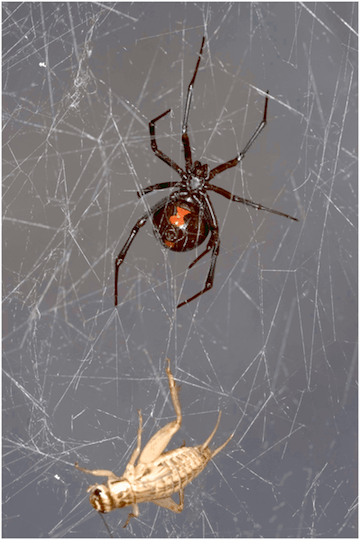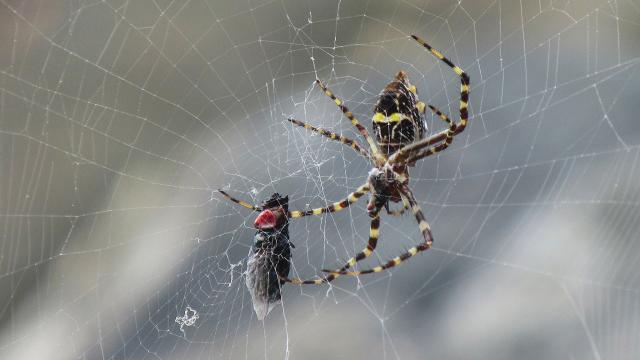Walking into a spiderweb just got creepy. Those sticky strands clinging to your hair and face? They’re smeared with traces of the spider’s last meal, according to a fascinating new analysis of spiderweb DNA.
In fact, anything that comes in contact with a web’s sticky fibres might leave bits of itself behind for a long time, notes Charles Xu of the University of Notre Dame in a study published today in PLOS One. And as technologies like metabarcoding — profiling the DNA of all the organisms present in a sample — become cheaper and more reliable, spiderwebs may represent a promising new environmental monitoring tool.

A black widow spider and cricket used in the experiment. Image Credit: Scott Camazine
“Since spider webs are basically these large sticky traps that are picking whatever might be blowing around, metabarcoding spider webs could be used to reveal entire communities of organisms in a variety of different environments,” Xu told Gizmodo in an email.
Xu demonstrated that in a pretty straightforward manner: rearing black widow spiders on a diet of house crickets, collecting spiderweb samples, extracting DNA, and recovering sequences belonging to both predator and prey.
“This was originally just a really fun and potentially useful idea I came up with as an undergraduate student, so I didn’t really think seriously about following up on it,” said Xu, now a masters student in evolutionary biology. But given the recent surge in the popularity of environmental DNA monitoring, Xu’s now hoping he can expand his work into a tool that’s broadly useful to ecologists.
“The next step is to look for DNA from many spider species in a range of habitats to see just how useful spider web DNA is under different conditions,” he said. “Another potentially exciting avenue is citizen science. People from all over the world could participate in the scientific process by collecting spider webs and sending them (to me) for genetic analyses. I can, in turn, tell them what kinds of critters might be living around them.”
So, next time you plow right through a spiderweb in the bush? After taking a solemn moment to appreciate that you’ve just destroyed a house built from the bones of its victims (figuratively speaking), be sure to pocket a sample for science.
Read the full scientific paper at PLOS One.
Top image: Chad Sparkes/Flickr
